Most of us enjoy an espresso on a daily basis, at least once. However, do you know anything about espresso nutrition, the amount of caffeine, and calories a single shot of espresso contains? How about how many shots per day are too many and what can you do to flush caffeine from your body?
We are here to help! We gathered all the answers to these questions, and many more, to ensure that you know what you are actually getting from your favorite beverage.
IN THIS ARTICLE:
Espresso Nutrition Facts
The first thing we need to define is the nutrition value of a single shot of espresso (1 oz or 30ml):
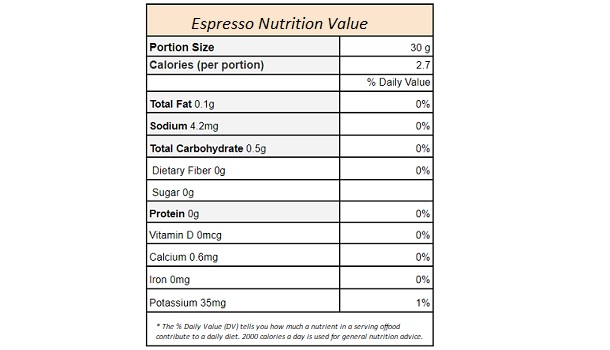

As you can tell by looking at espresso nutrition value, a single shot has only about 2.7 calories and is virtually carb-free (30 ml/1 oz shot only has about 0.5 grams). There is only 0.1 gram of fat in an espresso shot – that is if you do not any additional sweeteners to it. All this means that espresso, on its own, is very light and can be consumed even on a diet.
How Much Caffeine Is There In An Espresso Shot?
A regular (single) shot of espresso contains about 63 mg of caffeine per a single 1 oz shot (30ml).
Espresso Coffee Beans & Caffeine
The first thing you need to know is that there is no such thing as espresso beans. Almost all coffee is usually made from Arabica or Robusta coffee beans. Robusta has more caffeine than Arabica – on average 2.5% of caffeine per Robusta bean and around 1.3% per Arabica bean.
Does Espresso Have More Caffeine Than Drip Coffee?
Yes, and no – it depends on how you look at it. To clarify, a shot of espresso usually has about 63 mg of caffeine per shot whereas a single-serve of drip coffee contains about 12 to 16 mg of caffeine in a single ounce. You can notice straight away that espresso is much stronger. However, espresso is served as a 1 oz shot while a drip brew is served as a 6 oz serving, meaning, there is more caffeine in a cup of drip coffee than a cup of espresso.
Caffeine In Espresso-Based Beverages
Again, this depends on how much coffee you use, what kind of coffee you prefer, etc. So for reference, we are using Starbucks (a well known American chain of coffee shops) specialized brews as a base for this research:
- single espresso – while it usually contains about 63 mg of caffeine, the Starbucks version is a bit stronger and offers 75mg of caffeine
- double espresso – 150 mg of caffeine
- macchiato, latte, and cappuccino – short and tall versions have about 75 mg of caffeine while the grande and venti versions have about 150 mg of caffeine (20% more in a lungo version)
- mocha – short and tall versions have 90mg of caffeine, a grande has about 175mg of caffeine, while a venti has about 180mg of caffeine (the content is higher due to the extra caffeine in chocolate)
- flat white – with a ristretto espresso as a base, it contains about 90mg of caffeine both in short and tall versions, and 130mg of caffeine in a grande and a venti version
- americano – short americano has about 75 mg of caffeine, a tall one 150mg, a grande 225mg, and a venti 300mg
- ristretto – a ristretto has about 60 to 80 mg of caffeine per cup of coffee
What About Nespresso Coffee Capsules?
Nespresso coffee capsules have about 60 and 90 mg of caffeine per capsule. This depends on the amount of coffee that is used to prepare the coffee and the variety of green coffee beans that are used in the capsule.
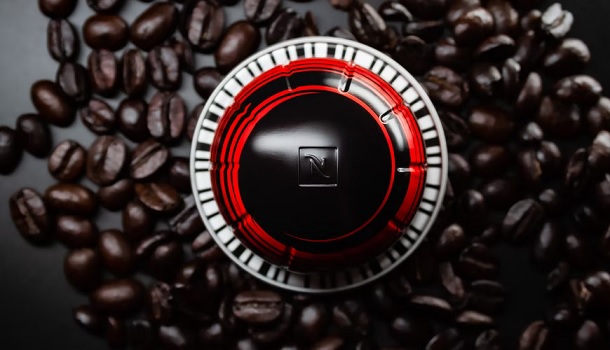

What Impacts The Amount Of Caffeine In An Espresso Brew?
While caffeine is found from the start in the coffee beans, this does not mean that we can extract all of it. A few things during the brewing process also impact the amount of caffeine we get from the beans:
- grind size – with a finer grind size, you can extract much more caffeine. However, espresso is a very tricky brew to make, too coarse grinds and your brew will be under-extracted and watery, too fine and your brew will be over-extracted and bitter. If you want to get a bit more caffeine in your espresso shot your best option is to use a bit more coffee per shot.
- saturation – to extract all caffeine from the grounds, your coffee should be completely saturated
- brewing temperature – lower temperatures need much more time to extract the caffeine from the coffee grounds so always make sure that your espresso machine is properly set (between 190 to 196 degrees Fahrenheit).
- shot timing – this is an interesting one. The perfect brewing time for espresso is about 20 to 30 seconds max. Now, everything after that is just adding hot water to the brewed espresso.
How Many Calories Espresso Based Drinks Have?
A single espresso shot has about 2 to 3 calories. However, this changes depending on whether you are drinking espresso as it is or are you enjoying some other specialized espresso brew:
- chocolate-covered espresso beans– about 1 oz has about 156 calories
- iced espresso – has about 45.8 calories
- espresso macchiato – about 15 calories
- vanilla espresso – 1 oz of has about 140 calories
- single brown sugar oat milk shaken espresso – has about 90 to 170 calories
- espresso frappuccino – a 12 fl oz has about 140 calories
- latte – a 16-ounce has about 190 calories
- triple shot espresso vodka – has about 65 calories
- espresso martini – has about 302 calories
How Much Is Too Much?
Even though espresso is a delicious coffee brew we often indulge in, we do need to know when it is time to stop.
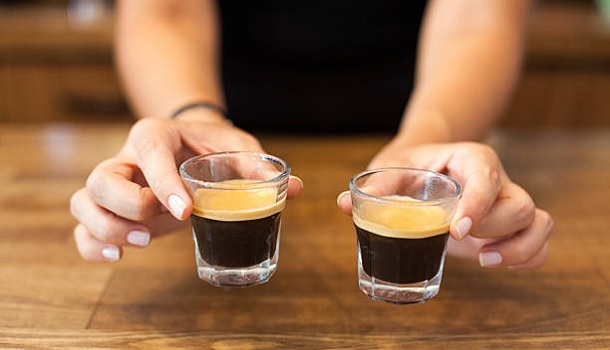

Is It OK To Drink Espresso Every Day?
As long as you consume espresso in moderation, yes, you can enjoy it on a daily basis without worrying about any negative health effects.
How Many Shots A Day Is OK?
According to FDA recommendations, 400 mg of caffeine a day is the maximum amount you should consume. That is just a little over six shots of espresso. It is worth knowing that caffeine tolerance varies from one person to the other so even 6 shots might be too much for you or you might be able to tolerate even more.
Is 2 Shots Of Espresso A Lot Of Caffeine?
It is enough, but not too much. 2 shots of espresso contain about 120 to 150 mg of caffeine which is still under the recommended amount of 400 mg.
What About 3 Shots?
3 shots of espresso per day are still within a normal caffeine dose.
Are 7 Shots Of Espresso Taking It A Bit Too Far?
As we said, 6 espresso shots are the top-recommended amount of caffeine you should consume. Anything more than that could lead to some serious problems such as panic attacks, insomnia, and even heart problems.
What Can 8 Shots Of Espresso Do To Your Body?
8 espresso shots a day can result in caffeine toxicity and even lead to more serious health problems.
How Long Can Caffeine Last In Your Body?
An average adult person can break down about half the amount of caffeine after about 5 to 6 hours since the last espresso shot.
How Can You Cut Down On Caffeine?
Caffeine can be very heavy on those with sensitivity issues, and yes, you can actually overdose on caffeine. So, if you are looking for a way to lower your caffeine intake, here are some methods you can give a try:
- order a small shot – avoid ordering a larger cup if a smaller shot is available.
- make a small brew – there is no need for you to brew a double shot at once if you are only looking for a single shot cup.


- avoid other caffeine sources – caffeine is not only found in espresso but also in chocolate tea, coca-cola, and other substances.
Things You Should Know About Espresso
Even though it is a part of our daily routine, there are many things we do not know about espresso itself:
Does Espresso Give You Energy?
Yes, it does. Caffeine in espresso kick starts your brain with dopamine. As a result, you can concentrate much better and focus on your daily tasks and responsibilities.
Is It Good For Weight Loss?
While espresso won’t help you lose weight, it can increase your energy levels and reduce your hunger, but only temporarily. This is due to the caffeine that gives you the needed boost. But no, you will not lose weight only by drinking espresso.
Can You Drink Espresso Without Sugar?
Of course, you can. Espresso is such a delicate brew with complex flavor and it is delicious on its own. However, if you prefer sweetened coffee, you can always add a teaspoon of sugar to your brew.
Is It Safe To Drink It On An Empty Stomach?
There is very little scientific evidence that suggests that espresso might be harmful when consumed on an empty stomach. It likely has the same effect on your body no matter when you consume it. The truth is, most people enjoy their first shot of espresso the minute they wake up.


What Exactly Does It Do To Your Body?
The great thing about espresso is that it is rich in antioxidants. As a result, it gives your immune system a nice boost. Also, it can reduce the Irish of stroke, diabetes, and heart diseases (reduce the risk not prevent).
Can It Help You Stay Awake?
Yes, espresso can help you stay awake. This is because of the caffeine and the energy boost it provides.
How Long Does It Take For An Espresso Shot To Kick In?
Once you have the espresso shot you will notice that the caffeine has the most intense effects within the first 30 to 60 minutes. At this point, you might start to feel “jittery” especially if you do not consume caffeine on a regular basis.
Can You Flush Caffeeien Out Of Your System?
Actually, you can not. The only thing you can do is give it some time for it to naturally flush itself out.
Is There Such A Thing As Decaf Espresso?
The decaffeination process removes about 97% or more caffeine from the coffee beans. This means that a decaf espresso still has about 2 mg of caffeine.
Espresso Powder Nutrition
Now, espresso powder is a dehydrated espresso brew turned into small coffee crystals you can use to get an instant espresso cup (perfect for those without an espresso machine), as a spice in your recipes, for cocktails, etc. Its nutrition value varies based on which powder you use, is it additionally sweetened or not, etc. Generally, it has about 3 calories per 2 grams and only 1% of total carbohydrates.
To Wrap It Up
Now you know everything about espresso, its caffeine percentage, calories, and how the two can impact your health. There is no need to avoid espresso or any other espresso-based beverage. You can still indulge in it safely as long as you do it in moderation.
If you think you are consuming too much caffeine throughout the day, try our advice for avoiding caffeine. Instead of your espresso shot, you can give up on tea or chocolate.

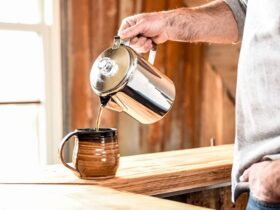
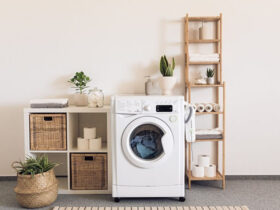
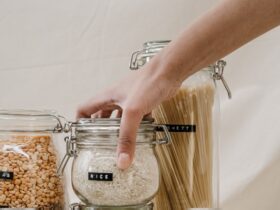
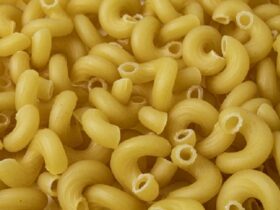
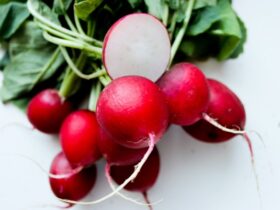
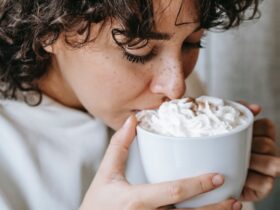
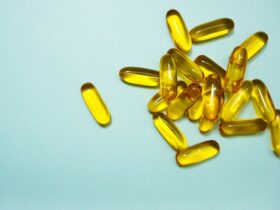
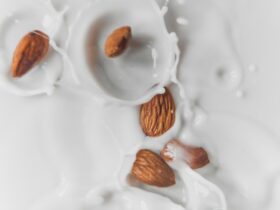
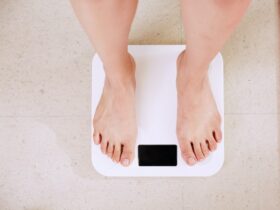
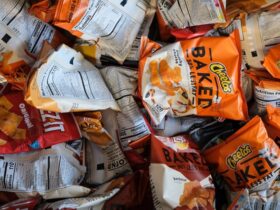
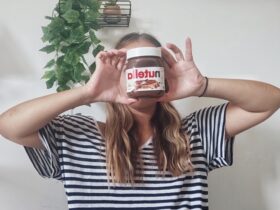
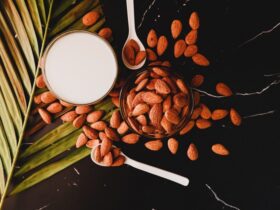
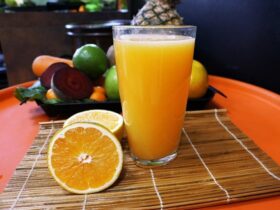

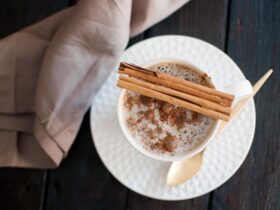
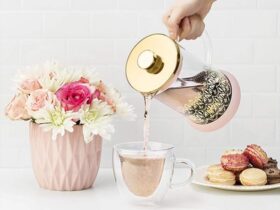
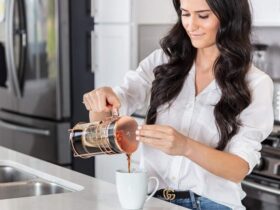
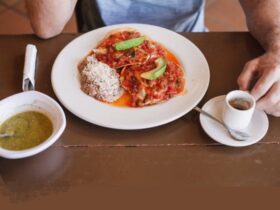
Leave a Reply